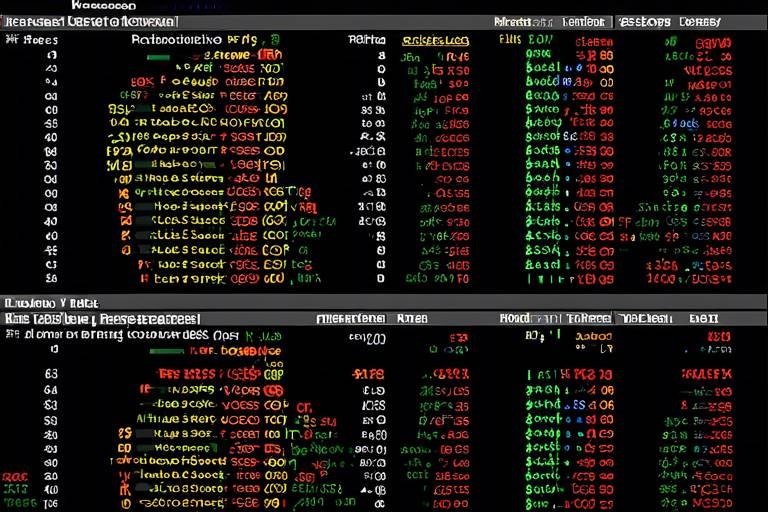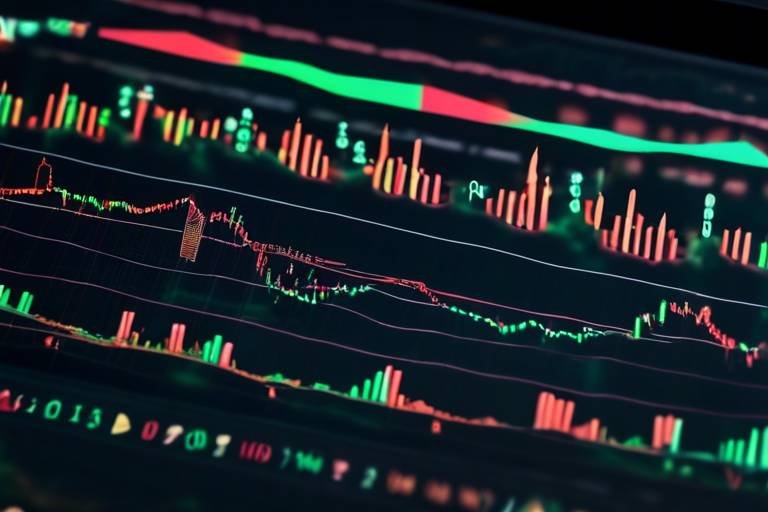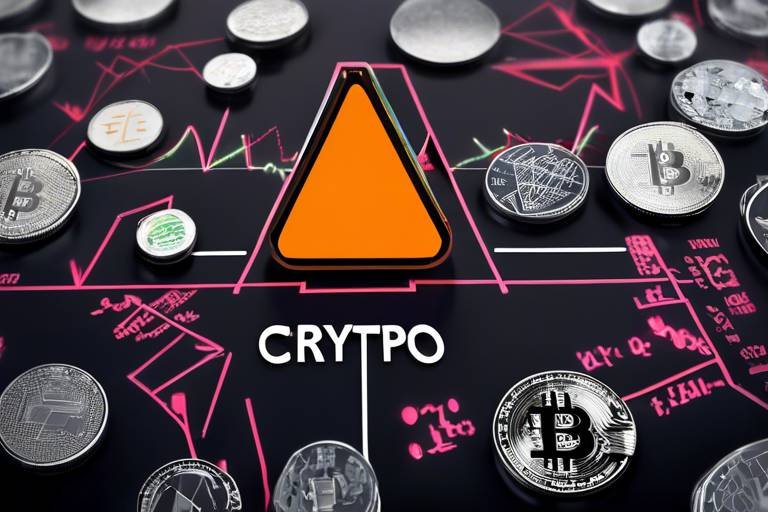Understanding Market Cycles in Cryptocurrency Trading
When it comes to cryptocurrency trading, understanding market cycles is like having a treasure map in a vast ocean of digital assets. Each cycle has its own story, and recognizing these phases can be the key to unlocking potential profits. So, what exactly are market cycles? They are the fluctuations in price and investor sentiment that occur over time, typically categorized into four main phases: accumulation, uptrend, distribution, and downtrend. By grasping the nuances of each phase, traders can make informed decisions, timing their entries and exits like seasoned navigators steering their ships through stormy seas.
Imagine you’re at a carnival, and the price of a thrilling ride fluctuates based on demand. During quieter times, the price drops, enticing more thrill-seekers to hop on. This is akin to the accumulation phase, where savvy investors buy in at lower prices, anticipating future growth. As excitement builds, prices begin to rise—welcome to the uptrend phase, where the atmosphere is electric, and confidence soars. But just like every carnival has its closing time, every uptrend must eventually transition to a distribution phase, where the smart money starts selling off assets at a premium. Finally, as the excitement wanes, we enter the downtrend phase, marked by falling prices and a sense of uncertainty. Understanding these cycles allows traders to not only survive but thrive in the ever-evolving world of cryptocurrency.
In this article, we’ll delve deeper into each of these phases, equipping you with the knowledge and strategies needed to navigate the cryptocurrency market effectively. Whether you’re a seasoned trader or just starting out, recognizing the signs of each phase can help you make better trading decisions. So, are you ready to embark on this journey through the thrilling world of cryptocurrency market cycles?
Market cycles in cryptocurrency trading are not just theoretical concepts; they are real phenomena that impact every trader’s journey. Let’s break down these four key phases:
| Phase | Characteristics | Implications for Traders |
|---|---|---|
| Accumulation | Lower prices, increased buying activity | Opportunity to buy at a discount |
| Uptrend | Rising prices, increasing investor confidence | Potential for profitable trades |
| Distribution | High prices, selling pressure from smart money | Time to consider taking profits |
| Downtrend | Falling prices, increased selling | Opportunity for short-selling |
Each phase presents unique opportunities and challenges. By understanding the characteristics of each phase, traders can better position themselves to capitalize on market movements.
Q: What is the best way to identify market cycles?
A: Traders can use a combination of technical analysis, volume analysis, and market sentiment indicators to identify market cycles effectively.
Q: How long do market cycles typically last?
A: The duration of market cycles can vary greatly, influenced by market conditions, investor sentiment, and external factors. Some cycles may last weeks, while others could extend for months or even years.
Q: Can I make money in a downtrend?
A: Yes, downtrends can present unique opportunities for traders, such as short selling or identifying undervalued assets for future investment.

The Phases of Market Cycles
Market cycles in cryptocurrency trading are like the changing seasons; they ebb and flow, creating opportunities for both seasoned and novice traders. Understanding these cycles is crucial for anyone looking to navigate the often tumultuous waters of cryptocurrency investments. Typically, these cycles are divided into four distinct phases: accumulation, uptrend, distribution, and downtrend. Each phase has its unique characteristics and implications, which can significantly impact trading strategies.
During the accumulation phase, smart investors are quietly building their positions, purchasing assets at lower prices before the market takes off. This phase is often marked by a sense of uncertainty, where prices stabilize and trading volumes begin to creep up. It’s the calm before the storm, where the wise gather their resources for the impending bull run.
As we transition into the uptrend phase, excitement begins to build. Prices rise, driven by increasing investor confidence and positive market sentiment. Traders who can identify this phase early can capitalize on the upward momentum, riding the wave of rising prices. It’s like catching a wave at just the right moment—timing is everything.
However, as the saying goes, what goes up must come down. This brings us to the distribution phase, where those who bought in during the accumulation phase start to take profits. Here, the smart money begins to sell off assets at higher prices, often leading to increased market volatility. Recognizing this phase is crucial, as it can signal the end of the uptrend and the beginning of a downturn.
Finally, we arrive at the downtrend phase, characterized by falling prices and heightened selling pressure. This phase can be daunting, but it’s also where savvy traders can find opportunities. Just as winter can be harsh, it can also present unique chances to buy undervalued assets or even short-sell for profit.
To summarize, understanding the phases of market cycles is essential for any cryptocurrency trader. By recognizing these phases, traders can better time their entry and exit points, maximizing profits while minimizing risks. Here’s a quick recap of the four phases:
| Phase | Description | Key Characteristics |
|---|---|---|
| Accumulation | Investors buy assets at lower prices. | Stable prices, increasing volume. |
| Uptrend | Prices rise with increasing investor confidence. | Higher highs, bullish sentiment. |
| Distribution | Smart money sells off assets at higher prices. | Declining volume, bearish divergence. |
| Downtrend | Prices fall under increased selling pressure. | Lower highs, lower lows. |
By familiarizing yourself with these phases, you can develop a more strategic approach to your trading, ensuring that you’re not just reacting to market movements, but proactively positioning yourself for success.
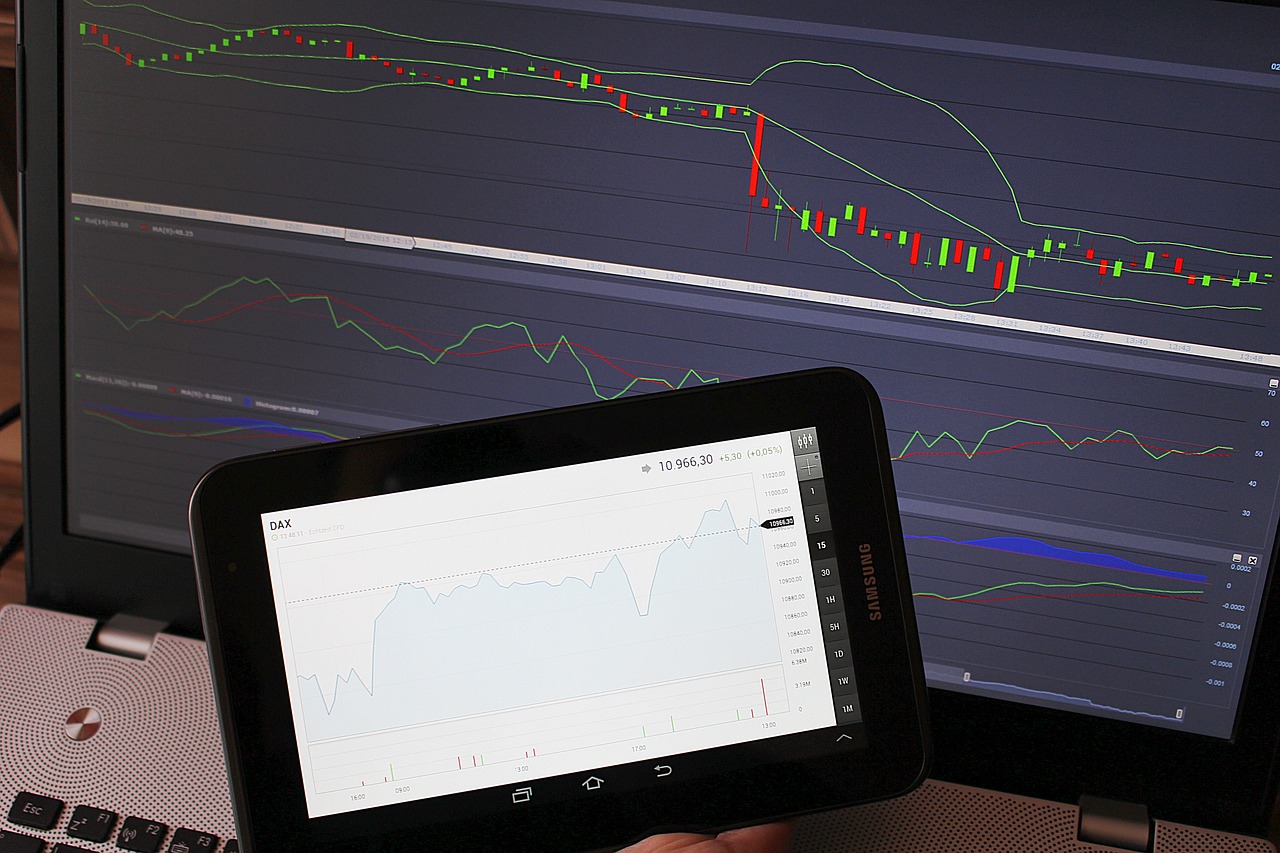
Accumulation Phase
The is a crucial stage in the cryptocurrency market cycle where savvy investors start to build their positions. This phase usually occurs after a downtrend, and it’s characterized by a period of sideways price movement. During this time, prices are often lower, creating a perfect opportunity for those who understand market dynamics. Imagine this phase as a calm before the storm, where the groundwork is laid for future growth. The key here is to recognize the signs that indicate the market is shifting from a downtrend to a potential uptrend.
To effectively identify the accumulation phase, traders should keep an eye out for specific signals that suggest a reversal might be on the horizon. One of the primary indicators is an increase in trading volume. When you see a surge in volume alongside stable price movements, it often indicates that buyers are entering the market, pushing prices higher. It’s like watching a pot of water begin to boil; you can see the bubbles forming before the full boil occurs.
Volume analysis is particularly important during this phase. A significant increase in trading volume can indicate heightened interest from investors, which is a strong signal that prices may soon rise. For instance, if you notice that the trading volume consistently increases while the price remains stable, it’s a sign that accumulation is happening. This can be visualized in the table below:
| Volume Trend | Price Movement | Market Sentiment |
|---|---|---|
| Increasing | Stable | Positive |
| Decreasing | Increasing | Negative |
Another way to spot the accumulation phase is by recognizing specific price patterns. Patterns such as double bottoms or higher lows often emerge during this phase. These patterns serve as a precursor to significant upward movements in cryptocurrency prices. Think of it like a spring being compressed; the more you compress it, the more potential energy it stores, ready to be released in a powerful upward thrust.
When navigating the accumulation phase, it’s essential to employ effective strategies that can help mitigate risks while maximizing potential gains. One popular approach is dollar-cost averaging, where investors buy a fixed dollar amount of a particular cryptocurrency at regular intervals, regardless of its price. This strategy helps to reduce the impact of volatility and ensures that investors accumulate assets over time.
Additionally, setting limit orders can be an effective way to buy cryptocurrencies at desired price points. This method allows traders to automate their purchases, ensuring they don’t miss out on opportunities while managing their risk. By combining these strategies, traders can position themselves favorably for the upcoming uptrend.

Identifying Accumulation Signals
Recognizing the accumulation phase in cryptocurrency trading is like spotting a hidden gem in a treasure hunt. It requires a keen eye and an understanding of specific signals that indicate smart investors are starting to buy into an asset at lower prices. One of the primary signals to look for is increased trading volume. When you notice a surge in trading activity, it often suggests that more traders are entering the market, which can lead to a potential price increase. Think of it as a crowd gathering around a popular food truck; the more people you see lining up, the more likely it is that something delicious is being served!
Another important aspect to consider is the stability of price movements. During the accumulation phase, prices tend to move within a relatively tight range, indicating that sellers are not willing to part with their assets at lower prices. This stability can be seen as a calm before the storm, where the market is preparing for an upward movement. Traders should pay attention to price patterns such as double bottoms or higher lows. These patterns often precede significant upward movements in cryptocurrency prices, acting as a signal that the accumulation phase is in full swing.
To further enhance your understanding, let’s dive into volume analysis. Analyzing volume is crucial during the accumulation phase as it provides insights into market sentiment. If you observe a notable increase in volume while prices remain stable or begin to rise slightly, it’s a strong indicator that accumulation is occurring. Conversely, if prices are rising but volume is declining, it may suggest that the upward movement is not supported by strong buying interest, which could lead to a reversal.
In summary, identifying accumulation signals involves a combination of observing trading volume, price stability, and recognizable price patterns. By honing in on these indicators, traders can position themselves strategically to capitalize on potential price increases. Remember, just like any treasure hunt, patience and careful observation are key to uncovering the riches that lie ahead!
- What is the accumulation phase? The accumulation phase is when savvy investors begin purchasing assets at lower prices, anticipating future price increases.
- How can I identify accumulation signals? Look for increased trading volume, stable price movements, and specific price patterns like double bottoms or higher lows.
- Why is volume analysis important? Volume analysis helps gauge market sentiment and indicates whether price movements are supported by strong buying interest.
- Can accumulation signals guarantee profit? While they provide valuable insights, no signal can guarantee profit. It’s essential to combine these signals with other trading strategies and risk management techniques.

Volume Analysis
When it comes to the accumulation phase in cryptocurrency trading, plays a pivotal role in determining market sentiment and potential price movements. Essentially, volume refers to the amount of a particular asset that is traded during a specific timeframe. High trading volumes often indicate a strong interest in an asset, while low volumes can suggest a lack of conviction among traders. Understanding these dynamics can be a game-changer for anyone looking to maximize their investment returns.
During the accumulation phase, traders should be on the lookout for increased trading volume as a key indicator. This uptick in volume often signifies that savvy investors are buying in at lower prices, setting the stage for potential price appreciation. Imagine a crowded concert; the more people show up, the more energy fills the room. Similarly, when trading volume spikes, it often correlates with heightened market activity and enthusiasm.
To illustrate the importance of volume analysis, consider the following table that outlines the relationship between volume and price movements:
| Volume Level | Price Action | Market Sentiment |
|---|---|---|
| Low | Stable or Declining | Indecision |
| Moderate | Gradual Increase | Growing Interest |
| High | Sharp Increase | Strong Confidence |
As seen in the table, high volume is often accompanied by significant price increases, reflecting a strong bullish sentiment. Conversely, low volume during a price rise can be a red flag, indicating that the rally may not be sustainable. Traders should always cross-reference volume data with price movements to ensure they are making informed decisions.
Another crucial aspect of volume analysis is the concept of volume divergence. This occurs when the price of an asset is moving in one direction while the volume is moving in the opposite direction. For instance, if prices are rising but volume is declining, it suggests that the upward trend may lack the necessary support, raising a caution flag for traders. In such cases, it’s essential to ask yourself: Is the market really behind this price increase?
In conclusion, mastering volume analysis can significantly enhance your trading strategy during the accumulation phase. By paying close attention to trading volumes, you can gain valuable insights into market sentiment and make more informed decisions. Just remember, in the world of cryptocurrency trading, knowledge is power, and understanding volume dynamics is a critical piece of that puzzle.

Price Patterns
When diving into the world of cryptocurrency trading, understanding is like having a map in a dense forest. These patterns serve as indicators that can guide traders through the often turbulent waters of the market. Two of the most notable patterns that traders should keep an eye on are the double bottom and higher lows. Recognizing these formations can be crucial for anticipating significant price movements.
The double bottom pattern is particularly fascinating. It often appears after a downtrend and signifies a potential reversal. Picture this: the price hits a low, bounces back up, dips down again to the same level, and then rises once more. This pattern suggests that the asset has found a strong support level, indicating that buyers are stepping in. Traders look for this formation as a signal to enter the market, hoping to ride the upcoming wave of price increases.
On the other hand, the higher lows pattern is a sign of strength and bullish sentiment. As the price fluctuates, it creates a series of lows that are progressively higher than the previous ones. This pattern signifies that while the price may be experiencing volatility, the overall trend is upward. It’s like climbing a staircase; each step up represents a new low that’s higher than the last. Traders often interpret this as a signal to buy, anticipating that the price will continue to rise.
To further illustrate these concepts, let’s take a look at a simple
| Pattern | Description | Trading Implication |
|---|---|---|
| Double Bottom | Price hits a low, bounces back, dips to the same level, then rises. | Potential bullish reversal; signal to buy. |
| Higher Lows | Price creates a series of lows that are progressively higher. | Indicates strength; signal to buy. |
Understanding these price patterns can significantly enhance a trader's ability to make informed decisions. However, it’s essential to remember that no pattern is foolproof. Traders should always consider other factors, such as market sentiment and volume, to confirm their analysis. By combining these insights, you can navigate the market with greater confidence and potentially reap the rewards of your trading strategies.

Strategies for the Accumulation Phase
When navigating the accumulation phase in cryptocurrency trading, having a well-thought-out strategy can make all the difference. This phase is often the calm before the storm, where savvy investors position themselves for future gains. One effective approach is dollar-cost averaging. This strategy involves investing a fixed amount of money at regular intervals, regardless of the asset's price. By doing this, traders can mitigate the risk of entering the market at a high point, as they buy both during dips and peaks. This consistent investment can lead to a lower average purchase price over time, making it an attractive option for those looking to accumulate assets.
Another valuable tactic is setting limit orders. A limit order allows traders to specify the maximum price they are willing to pay for an asset. This ensures that they don’t overpay, even in a volatile market. For instance, if a trader identifies a cryptocurrency that they believe is undervalued, they can set a limit order slightly above the current price. If the market dips to that level, the order executes automatically, allowing the trader to capitalize on the lower price without constantly monitoring the market.
Additionally, technical analysis plays a crucial role during the accumulation phase. Traders can utilize various indicators to identify potential entry points. For example, moving averages can help smooth out price data and highlight trends. When the short-term moving average crosses above the long-term moving average, it may signal a good buying opportunity. Furthermore, traders should pay attention to support and resistance levels. Support levels indicate where the price tends to stop falling and may bounce back up, while resistance levels show where the price has difficulty rising. By identifying these levels, traders can make more informed decisions about when to enter the market.
Lastly, staying informed about market news and developments is crucial. The cryptocurrency market is highly influenced by external factors, such as regulatory news, technological advancements, and market sentiment. By keeping an ear to the ground, traders can better anticipate shifts in the market that may signal the end of the accumulation phase and the onset of an uptrend.
In summary, successful strategies during the accumulation phase include:
- Dollar-cost averaging to spread out investment risk.
- Setting limit orders to control purchase prices.
- Utilizing technical analysis to identify entry points.
- Staying updated on market news and trends.
By employing these strategies, traders can position themselves effectively during the accumulation phase, setting the stage for potential future profits as the market shifts towards an uptrend.
Q: What is the accumulation phase in cryptocurrency trading?
A: The accumulation phase is a period when investors start buying assets at lower prices, anticipating future price increases. It often occurs after a downtrend and before an uptrend.
Q: How can I identify the accumulation phase?
A: Look for signs such as increased trading volume, stable price movements, and specific price patterns like double bottoms or higher lows. These indicators suggest that smart money is entering the market.
Q: Why is dollar-cost averaging a good strategy?
A: Dollar-cost averaging helps mitigate the risk of market volatility by spreading investments over time. This way, you avoid the pitfalls of trying to time the market perfectly.
Q: What role does technical analysis play in the accumulation phase?
A: Technical analysis helps traders identify potential entry points and trends. Indicators like moving averages and support/resistance levels can guide investment decisions during this phase.

Uptrend Phase
The in cryptocurrency trading is like a thrilling rollercoaster ride, where prices soar, and investor confidence reaches new heights. This phase is characterized by a consistent increase in prices, often driven by positive market sentiment and heightened demand for specific cryptocurrencies. During this exhilarating period, traders are presented with a golden opportunity to capitalize on rising prices and maximize their profits. However, it's essential to navigate this phase with a strategic mindset to ensure that you don't get caught off guard when the market inevitably shifts.
One of the most critical aspects of identifying an uptrend is recognizing the key indicators that signal this bullish momentum. Traders often rely on tools such as moving averages, which help smooth out price fluctuations and highlight the overall direction of the market. For instance, when the short-term moving average crosses above the long-term moving average, it's often seen as a strong bullish signal, indicating that the uptrend is likely to continue. Additionally, bullish market sentiment can be gauged through various channels, including news articles, social media discussions, and community forums, where positive developments and endorsements can drive enthusiasm among traders.
However, while the uptrend phase may seem like a time to celebrate, it's crucial to remember that risk management remains a top priority. Just because the market is rising doesn't mean that traders should throw caution to the wind. Setting stop-loss orders is a prudent strategy to safeguard your investments. By establishing a predetermined price at which you will sell your assets, you can protect yourself from sudden market downturns that may occur even in a bullish environment. Moreover, taking profits at predetermined levels can help you lock in gains and avoid the temptation to hold out for even higher prices, which can sometimes lead to missed opportunities.
In the world of cryptocurrency trading, timing is everything. The uptrend phase offers a unique chance to enter positions at favorable prices, but it also requires a keen eye for market signals. Traders should remain vigilant and continuously analyze market trends to identify the best moments to enter or exit trades. By combining technical analysis with a solid understanding of market sentiment, traders can position themselves to take full advantage of the uptrend phase while minimizing their exposure to potential risks.
In conclusion, the uptrend phase is an exciting time for cryptocurrency traders, filled with opportunities and challenges. By understanding the indicators of an uptrend, implementing effective risk management strategies, and staying informed about market sentiment, traders can navigate this phase successfully. Remember, in the fast-paced world of cryptocurrency, knowledge is power, and staying ahead of the curve can make all the difference between a profitable trade and a missed opportunity.
- What is an uptrend in cryptocurrency trading? An uptrend refers to a sustained increase in the price of a cryptocurrency, often characterized by higher highs and higher lows.
- How can I identify an uptrend? Look for key indicators such as moving averages, bullish market sentiment, and consistent price increases.
- Is risk management important during an uptrend? Yes, even in an uptrend, it's crucial to implement risk management strategies like setting stop-loss orders to protect your investments.
- What are some effective strategies during the uptrend phase? Consider using trailing stops, taking profits at predetermined levels, and continuously monitoring market sentiment.

Indicators of an Uptrend
When it comes to identifying an uptrend in cryptocurrency trading, there are several key indicators that traders should keep a close eye on. Understanding these indicators can empower you to make informed decisions and maximize your profits. One of the most reliable indicators is the use of moving averages. Moving averages smooth out price data by creating a constantly updated average price. When the shorter-term moving average crosses above the longer-term moving average, it often signals the beginning of an uptrend, suggesting that prices are likely to continue rising.
Another crucial indicator is bullish market sentiment. This is often reflected in news headlines, social media trends, and overall investor enthusiasm. You can gauge market sentiment through various tools, including sentiment analysis platforms and social media monitoring. When the buzz around a cryptocurrency is overwhelmingly positive, it usually correlates with rising prices.
Additionally, higher highs and higher lows are fundamental price action patterns that signify an uptrend. This means that each successive peak in price is higher than the last, and each trough is also higher than the previous one. This pattern indicates strong buying pressure and can be visually confirmed on price charts. For example, if you notice that Bitcoin has consistently been making higher peaks over the past few weeks, it’s a strong sign that an uptrend is in play.
To further enhance your analysis, consider combining these indicators. For instance, if you see higher highs and higher lows alongside positive market sentiment and a crossing of moving averages, you can feel more confident that an uptrend is underway. However, it's essential to remain vigilant and not rely solely on one indicator. Always look for confirmation from multiple sources to ensure that your trading decisions are well-informed and strategic.
In summary, recognizing the indicators of an uptrend can significantly influence your trading success. By paying attention to moving averages, market sentiment, and price action patterns, you can position yourself to capitalize on profitable opportunities in the cryptocurrency market.
- What is a moving average? A moving average is a statistical calculation that analyzes data points by creating averages of different subsets of the complete data set, helping to smooth out price fluctuations.
- How can I gauge market sentiment? Market sentiment can be gauged through news articles, social media trends, and sentiment analysis tools that provide insights into how investors feel about a particular cryptocurrency.
- What does it mean if prices are making higher highs? If prices are making higher highs, it indicates that the market is experiencing upward momentum, suggesting strong buying interest and potential for continued price increases.
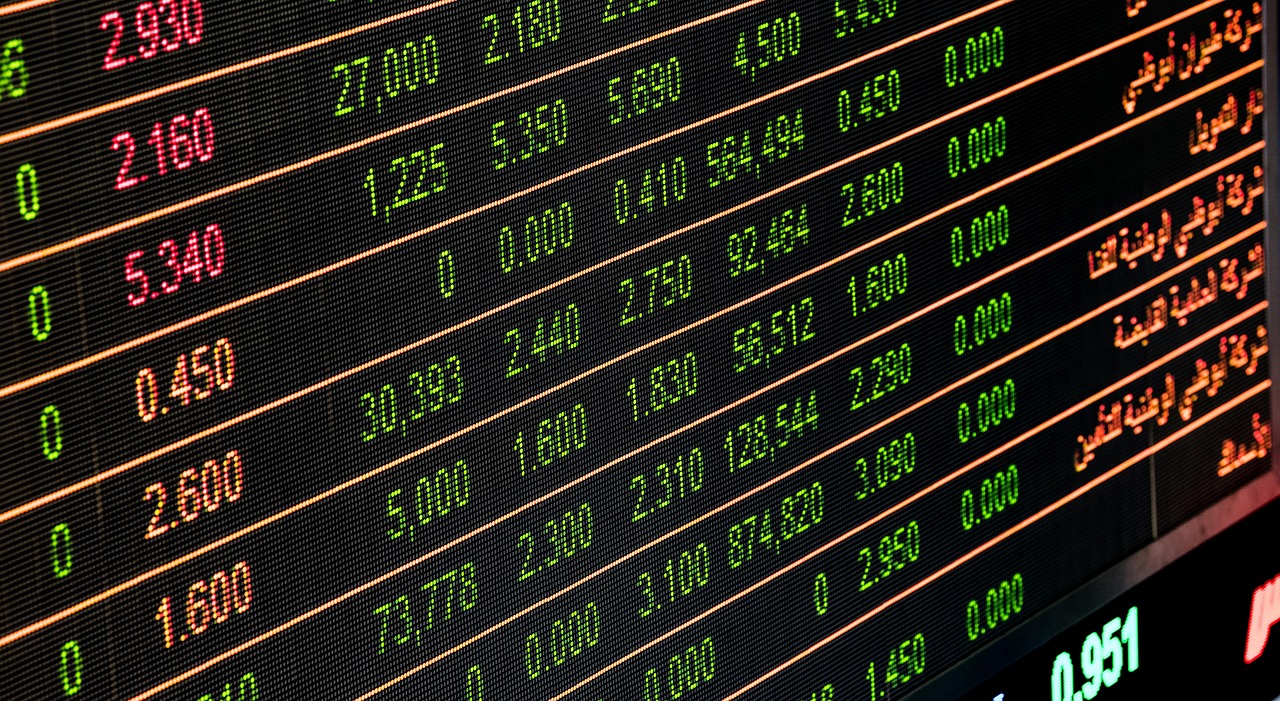
Risk Management During Uptrends
When riding the wave of an uptrend, it's easy to get swept away by the excitement of rising prices and soaring profits. However, even the most bullish market can turn on a dime, making risk management an essential component of any successful trading strategy. Think of it like surfing: the thrill of catching a big wave is exhilarating, but without proper balance and control, you could wipe out at any moment.
One of the most effective strategies for managing risk during uptrends is to set stop-loss orders. A stop-loss order is an automatic instruction to sell your asset once it reaches a certain price point. This tactic helps protect your gains by minimizing potential losses if the market suddenly reverses. For instance, if you bought a cryptocurrency at $200 and set a stop-loss at $180, you ensure that you will exit the trade before the price drops too low, preserving your profits.
Another critical aspect of risk management is to establish clear profit-taking strategies. Just as you wouldn't ride a wave indefinitely without considering your exit, you shouldn't hold onto your assets without a plan. Setting profit targets allows you to lock in gains at predetermined levels. For example, if you anticipate that a cryptocurrency will reach $250, you could set a limit order to sell once it hits that price. This way, you capitalize on the uptrend while safeguarding your profits.
Moreover, diversifying your portfolio can also be a smart move during uptrends. By spreading your investments across different cryptocurrencies, you reduce the risk associated with any single asset. Imagine a basket of fruits: if one fruit spoils, you still have others to enjoy. In the same vein, having a diverse portfolio can cushion the blow if one of your investments takes a downturn.
In addition to these strategies, it's essential to stay informed about market conditions and news that could impact your investments. Regularly reviewing your trades and adjusting your strategies based on market sentiment can help you navigate the ups and downs of the cryptocurrency landscape. Remember, even in a bullish market, the unexpected can happen, so staying vigilant is key.
In summary, effective risk management during uptrends involves a combination of setting stop-loss orders, establishing profit targets, diversifying your portfolio, and staying informed. By implementing these strategies, you can ride the waves of the market while minimizing your risks and maximizing your potential rewards.
- What is a stop-loss order? A stop-loss order is an instruction to sell an asset when it reaches a specific price, helping to minimize losses.
- How can I set profit targets? Profit targets are predetermined price points at which you plan to sell an asset to lock in gains.
- Why is diversification important? Diversification reduces the risk associated with any single investment by spreading your assets across multiple cryptocurrencies.
- How often should I review my trading strategy? Regular reviews, ideally weekly or monthly, help you stay informed about market conditions and adjust your strategies accordingly.

Distribution Phase
The is a critical period in the cryptocurrency market, marked by a shift in sentiment among traders. During this phase, savvy investors, often referred to as "smart money," begin to sell their assets after experiencing significant price increases. This phase is essential to understand because it can indicate a potential reversal in the market, leading to the subsequent downtrend. Recognizing the signs of distribution can help traders make informed decisions to protect their investments and maximize their profits.
One of the primary indicators of the distribution phase is declining trading volume during price increases. When prices rise but the volume starts to drop, it suggests that the enthusiasm driving the price up is waning. This divergence can be a red flag for traders, signaling that the upward momentum may not be sustainable. Additionally, bearish divergence can occur when the price reaches new highs while momentum indicators, like the Relative Strength Index (RSI), fail to do so. This discrepancy indicates weakening buying pressure and can be a precursor to a market correction.
To further illustrate the dynamics of the distribution phase, consider the following table that highlights key indicators and their implications:
| Indicator | Description | Implication |
|---|---|---|
| Declining Volume | Volume decreases as prices increase. | Potential weakening of the uptrend. |
| Bearish Divergence | Price makes new highs, but momentum indicators do not. | Signal for possible price reversal. |
| Market Sentiment | Shift from bullish to cautious or bearish sentiment. | Indicates potential selling pressure. |
Recognizing these signs is crucial for traders who want to avoid potential losses. As the distribution phase unfolds, traders should consider adopting specific strategies to safeguard their profits. For instance, scaling out of positions—selling portions of their holdings at various price points—can help lock in gains while still allowing for potential upside. Another effective strategy is using trailing stops, which enable traders to set a stop-loss order that moves with the market price. This way, if the price starts to decline, the stop-loss will trigger, helping to minimize losses.
Ultimately, the distribution phase is a time for caution and strategic planning. By paying close attention to market signals and employing effective strategies, traders can navigate this phase successfully and position themselves for future opportunities. Remember, the key to thriving in the cryptocurrency market lies in understanding not just the phases but also the psychology behind them. As the saying goes, "Buy low, sell high," and during the distribution phase, knowing when to sell can make all the difference.
- What is the distribution phase in cryptocurrency trading?
The distribution phase is when smart investors start selling their assets at higher prices, indicating a potential market reversal. - How can I identify the distribution phase?
Look for declining trading volume during price increases and signs of bearish divergence in momentum indicators. - What strategies should I use during the distribution phase?
Consider scaling out of positions and using trailing stops to secure profits while minimizing risks. - Is it possible to profit during the distribution phase?
Yes, traders can profit by selling their assets at higher prices and potentially short selling if the downtrend begins.

Signs of Distribution
Recognizing the signs of distribution is crucial for any trader looking to navigate the volatile waters of cryptocurrency trading effectively. The distribution phase often sneaks up on unsuspecting traders, leading to unexpected losses if they aren’t prepared. So, what should you be on the lookout for? Well, there are several key indicators that can signal this phase is underway. One of the most telling signs is a decline in trading volume during price increases. You might wonder, "How can lower volume be a bad thing?" Think of it this way: if prices are rising but fewer people are buying, it suggests that the enthusiasm is waning. This lack of participation can indicate that the upward momentum is losing steam.
Another significant indicator is bearish divergence. This occurs when the price of a cryptocurrency continues to rise while technical indicators, like the Relative Strength Index (RSI), start to decline. It’s as if the market is giving you a subtle warning—like a smoke alarm going off in a quiet house. If you notice this divergence, it’s time to reassess your position. The market could be gearing up for a downturn, and being caught off guard can lead to substantial losses.
Additionally, keep an eye on market sentiment. If the general mood turns pessimistic despite rising prices, it could be a sign that distribution is taking place. Traders might be feeling jittery, which can lead to a swift sell-off. In this context, it’s essential to stay informed about news and events that may impact market sentiment. A sudden negative news story can trigger panic selling, leading to a sharp decline in prices.
To summarize, here are some critical signs of distribution to watch out for:
- Declining volume during price increases
- Bearish divergence between price and technical indicators
- Negative market sentiment despite rising prices
By keeping a close eye on these signs, traders can better position themselves to protect their investments and capitalize on potential opportunities. In the fast-paced world of cryptocurrency, being proactive can make all the difference between profit and loss.
Q: What is the distribution phase in cryptocurrency trading?
A: The distribution phase occurs when smart investors start selling off their assets at higher prices, often leading to a price decline.
Q: How can I identify the distribution phase?
A: Look for indicators such as declining volume during price increases and bearish divergence in technical indicators.
Q: What should I do during the distribution phase?
A: Consider scaling out of your positions and using trailing stops to secure profits while minimizing potential losses.
Q: Is it possible to profit during the distribution phase?
A: Yes, although challenging, some traders may short sell or identify undervalued assets for potential profit during this phase.
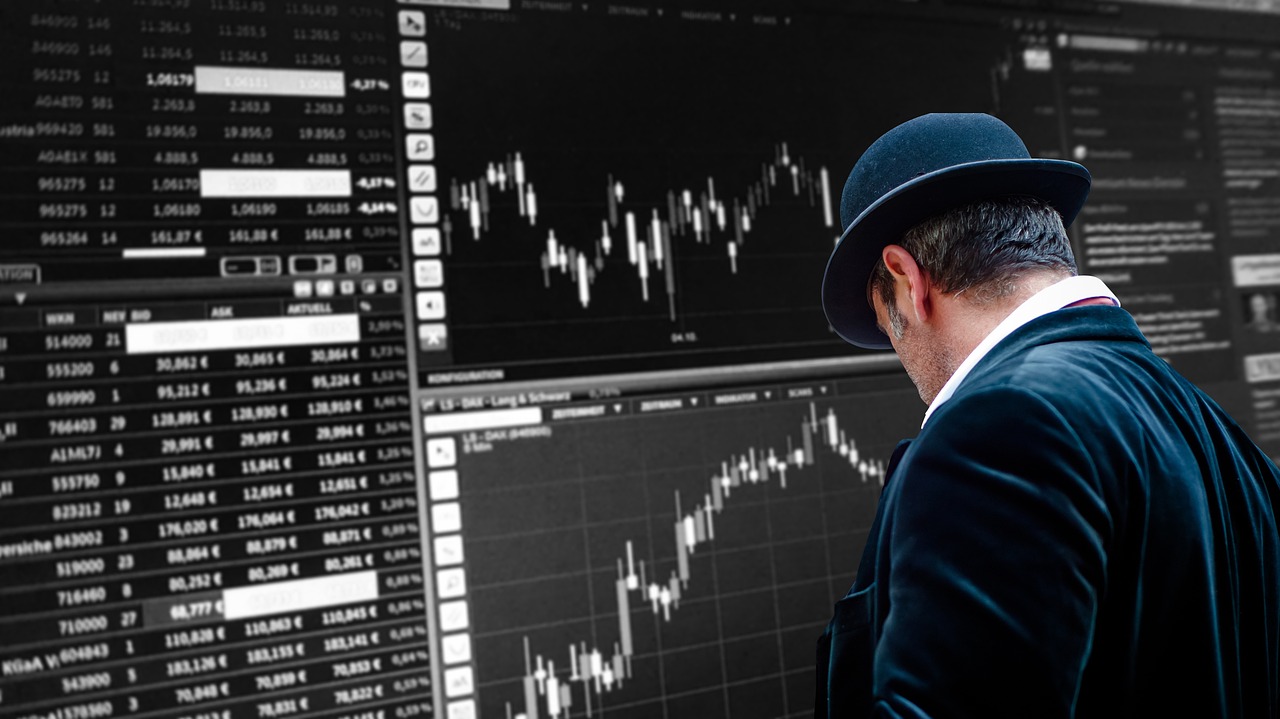
Strategies for the Distribution Phase
During the distribution phase, savvy traders need to be on high alert. This is the stage where the smart money starts to sell off their assets at inflated prices, often leading to a market correction. Recognizing this phase early can save you from significant losses, and employing effective strategies is crucial. One of the most effective tactics during this time is to scale out of positions. This means gradually selling portions of your holdings rather than dumping everything at once. By doing so, you can lock in profits while still maintaining some exposure in case the price continues to rise, which can happen unexpectedly.
Another strategy to consider is utilizing trailing stops. A trailing stop order allows you to set a stop-loss limit that moves with the market price. For instance, if you own an asset that is currently trading at $100 and you set a trailing stop at 10%, your stop-loss would be activated if the price drops to $90. However, if the price rises to $120, your stop-loss would adjust to $108. This method helps you secure profits while giving your investment room to grow, all while protecting against sudden downturns.
Additionally, keeping a close eye on market indicators is vital. For example, if you notice declining volume during price increases, it could be a red flag indicating that the rally is losing steam. Similarly, if you observe bearish divergence, where prices are rising but momentum indicators are falling, this could signal an impending reversal. Recognizing these signs allows you to make informed decisions about when to exit your positions.
To summarize, the distribution phase requires a careful balance of profit-taking and risk management. By scaling out of positions, using trailing stops, and closely monitoring market indicators, you can navigate this phase with confidence. Remember, the goal is not just to make a profit but to protect your gains as the market transitions into the next phase. Always stay alert and ready to adapt your strategies to the ever-changing landscape of cryptocurrency trading.
- What is the distribution phase in cryptocurrency trading?
The distribution phase occurs when smart investors begin to sell off their assets at higher prices, often leading to a market correction.
- How can I identify a distribution phase?
Look for signs such as declining volume during price increases and bearish divergence, which can indicate that the market is losing momentum.
- What strategies can I use during the distribution phase?
Strategies include scaling out of positions, utilizing trailing stops, and closely monitoring market indicators to make informed decisions.
- Is it risky to trade during the distribution phase?
Yes, it can be risky if you are not aware of the signs indicating a market downturn. Effective risk management is essential during this phase.
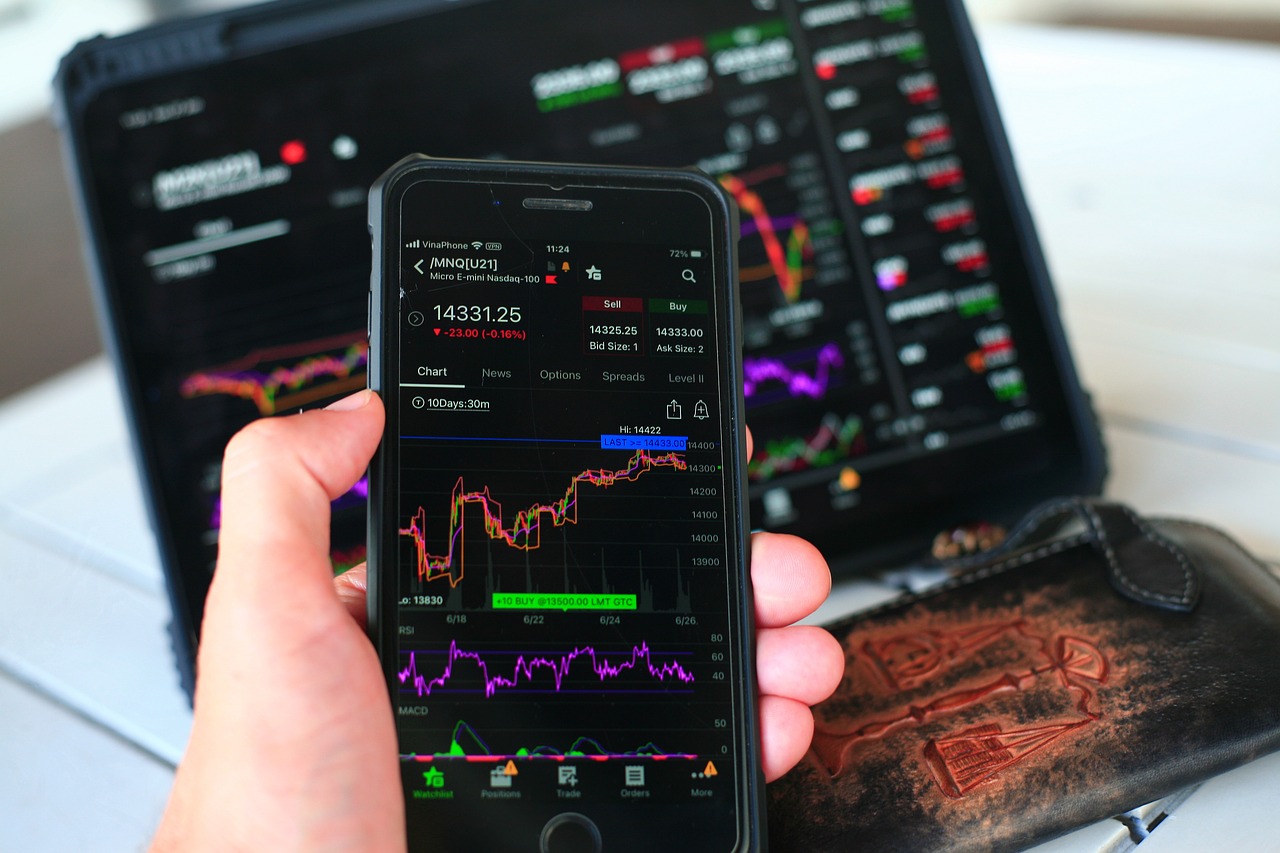
Downtrend Phase
The is one of the most challenging periods in cryptocurrency trading, marked by a significant decrease in asset prices and a surge in selling pressure. During this phase, the market sentiment often shifts to a pessimistic outlook, leading many traders to panic and sell off their holdings. Understanding the dynamics of this phase is crucial for traders who want to navigate the turbulent waters of the market effectively. Just like a ship caught in a storm, traders must learn to steer through the waves of uncertainty without capsizing their portfolios.
Recognizing a downtrend is essential for any trader looking to protect their investments. Key indicators include lower highs and lower lows, which signify a persistent decline in prices. Additionally, an increase in trading volume often accompanies these price movements, indicating heightened selling activity. It's like watching a cascading waterfall; once it starts, it can be hard to stop. Traders need to keep a close eye on these signals to avoid getting swept away by the downward momentum.
Despite the daunting nature of a downtrend, it’s important to remember that opportunities can still arise. Just as a gardener knows that some plants thrive in the shade, savvy traders can find ways to profit even in declining markets. For example, short selling can be a lucrative strategy during this phase. By borrowing assets and selling them at current prices, traders can profit when they buy them back at lower prices. Additionally, identifying undervalued assets that have the potential to rebound can provide a silver lining amidst the gloom. It’s about finding diamonds in the rough, even when the market seems bleak.
In this phase, traders should also consider employing risk management strategies to safeguard their investments. Setting stop-loss orders can help limit potential losses by automatically selling assets when they reach a certain price. This is akin to wearing a life jacket while navigating stormy seas; it provides a safety net that can prevent significant financial loss. Moreover, utilizing technical analysis tools to assess market trends and price movements can further enhance a trader's ability to make informed decisions.
In summary, the downtrend phase presents both challenges and opportunities for cryptocurrency traders. By recognizing key indicators, employing effective strategies, and practicing sound risk management, traders can weather the storm and emerge with valuable insights and potential profits. Remember, every cloud has a silver lining, and even in the darkest of times, there are ways to find light.
- What is a downtrend in cryptocurrency trading?
A downtrend refers to a sustained decrease in the price of a cryptocurrency, characterized by lower highs and lower lows. - How can I identify a downtrend?
Key indicators include observing lower highs and lower lows, along with increased trading volume during price declines. - Are there any strategies to profit during a downtrend?
Yes, traders can engage in short selling or look for undervalued assets that may rebound in the future. - What risk management techniques should I use in a downtrend?
Setting stop-loss orders and utilizing technical analysis tools can help manage risk effectively during a downtrend.

Recognizing a Downtrend
Recognizing a downtrend in cryptocurrency trading is akin to spotting storm clouds on the horizon. Just as a savvy sailor would adjust their sails before the winds change, traders must be vigilant in identifying the signs of a market downturn. A downtrend is typically characterized by a series of lower highs and lower lows, which indicates that sellers are gaining control over the market. This pattern reflects a shift in sentiment, where fear often replaces confidence, leading to increased selling pressure.
To effectively recognize a downtrend, traders should monitor key indicators that can provide insights into market dynamics. For instance, a consistent pattern of lower highs can signal that the asset is losing value, while lower lows reinforce the notion that the market is trending downward. Additionally, observing increased trading volume during price declines is crucial. This surge in volume often suggests that more traders are participating in the sell-off, further validating the downtrend.
Another critical aspect of recognizing a downtrend is the concept of bearish divergence. This occurs when the price of a cryptocurrency makes new highs while the momentum indicators, such as the Relative Strength Index (RSI), fail to follow suit. This divergence can serve as a warning sign that the upward momentum is weakening, and a reversal may be imminent. By keeping an eye on these indicators, traders can position themselves to avoid potential losses and make informed decisions.
To summarize, recognizing a downtrend involves a careful analysis of price action and volume. Key indicators to look out for include:
- Lower Highs: A series of peaks that decrease in value.
- Lower Lows: A succession of troughs that also decline.
- Increased Volume: Higher trading volumes accompanying price drops.
- Bearish Divergence: A disconnect between price action and momentum indicators.
By understanding these signals, traders can better navigate the turbulent waters of cryptocurrency markets. Just as a seasoned navigator reads the stars to chart a safe course, traders must utilize these indicators to steer clear of potential pitfalls. This proactive approach not only safeguards investments but also opens the door to strategic opportunities, even in challenging market conditions.
Q1: What is a downtrend in cryptocurrency?
A downtrend refers to a period in which the prices of cryptocurrencies consistently decline, characterized by lower highs and lower lows. This trend often reflects negative market sentiment and increased selling pressure.
Q2: How can I identify a downtrend early?
Early identification of a downtrend can be achieved by monitoring key indicators such as lower highs, lower lows, increased trading volume during price declines, and bearish divergence in momentum indicators.
Q3: Should I sell my assets during a downtrend?
Deciding to sell during a downtrend depends on your trading strategy and risk tolerance. Some traders may choose to cut losses, while others might look for opportunities to buy undervalued assets.
Q4: Can downtrends present opportunities for profit?
Yes, downtrends can present unique opportunities, such as short selling or identifying undervalued assets that may rebound in the future. It’s essential to conduct thorough research and analysis before making any decisions.
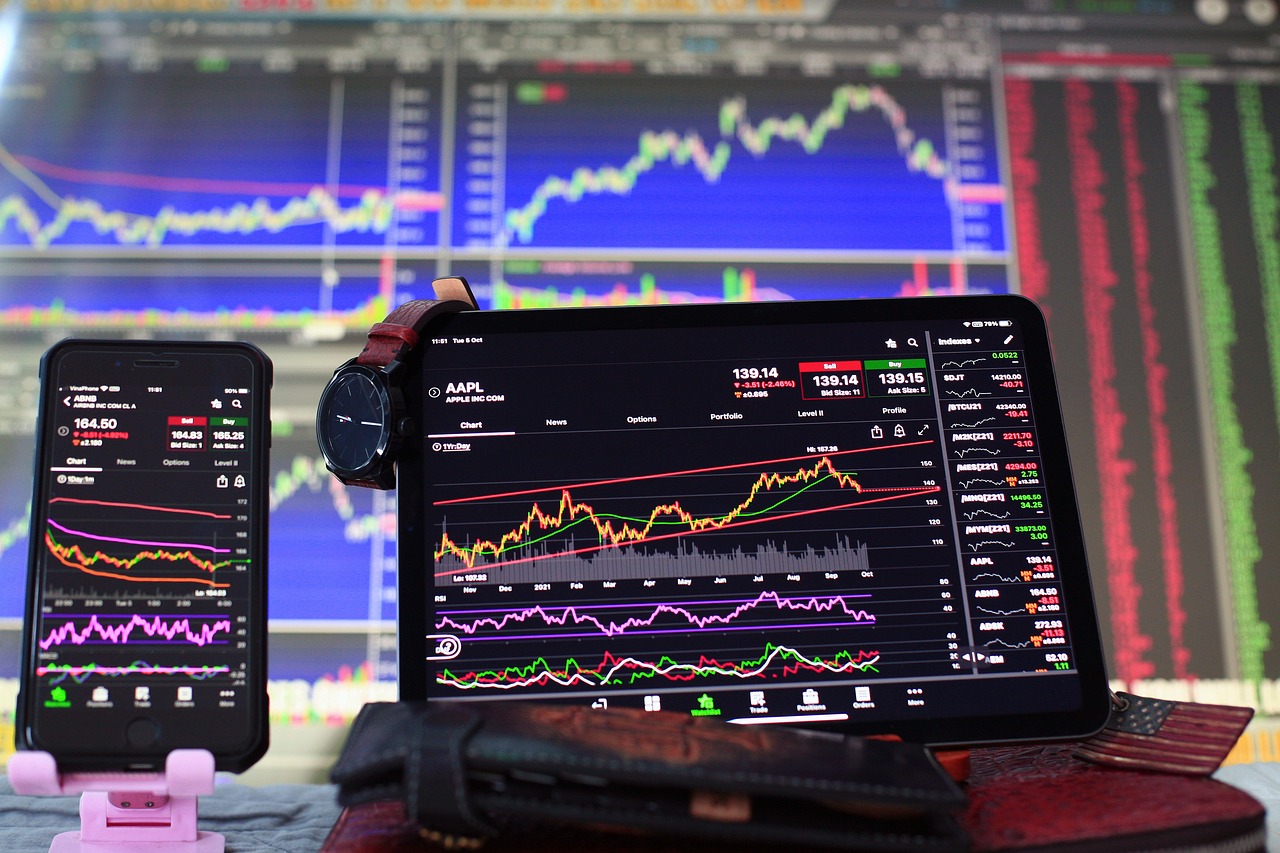
Opportunities in Downtrends
While it might seem counterintuitive, downtrends in cryptocurrency trading can actually present some unique opportunities for savvy traders. Just as a storm can reveal hidden treasures washed ashore, a downtrend can uncover undervalued assets that have the potential for significant growth once the market rebounds. Understanding how to navigate these turbulent waters can be the key to not just surviving but thriving in a bearish market.
One of the most effective strategies during a downtrend is short selling. This technique allows traders to profit from falling prices by borrowing assets and selling them at the current market price, with the intention of buying them back later at a lower price. For instance, if you believe that a particular cryptocurrency is overvalued and its price is likely to drop, you can short sell it, thereby capitalizing on the downward movement. However, it’s crucial to have a solid understanding of the market and to implement strict risk management practices, as short selling can be risky if the market unexpectedly reverses.
Another opportunity arises from identifying undervalued assets. During downtrends, many cryptocurrencies can become oversold, leading to prices that do not reflect their true value. This is where diligent research comes into play. By analyzing the fundamentals of various cryptocurrencies, traders can spot those that have strong use cases or solid development teams behind them. Investing in these undervalued assets during a downtrend can lead to substantial profits when the market eventually turns bullish.
Here are a few key considerations for finding opportunities in downtrends:
- Market Sentiment: Keep an eye on market sentiment indicators. When fear dominates the market, many traders panic and sell, often leading to significant price drops that don’t reflect the real value of the asset.
- Technical Analysis: Use technical analysis tools to identify potential reversal points. Look for signs of bullish divergence where price action is decreasing, but indicators like the RSI (Relative Strength Index) show increasing momentum.
- Stay Informed: Follow news and updates related to the cryptocurrencies you are interested in. Sometimes, external factors can create buying opportunities during a downtrend.
In conclusion, while downtrends can be daunting, they also offer a chance to capitalize on market inefficiencies. By employing strategies like short selling and focusing on undervalued assets, traders can turn potential losses into lucrative opportunities. Remember, the key to success in any market condition lies in thorough research, disciplined trading, and a willingness to adapt to changing circumstances.
1. Can I really make money during a downtrend?
Yes, by employing strategies like short selling or investing in undervalued assets, traders can profit even when the market is declining.
2. What should I look for in undervalued assets?
Focus on the fundamentals of the asset, such as its use case, technology, and the team behind it. A strong foundation can indicate potential for recovery.
3. Is short selling risky?
Yes, short selling carries significant risk, especially if the market reverses unexpectedly. It’s essential to use risk management strategies like stop-loss orders.
4. How can I stay updated on market trends?
Follow reputable cryptocurrency news sources, join online forums, and use social media to stay informed about market movements and sentiment.
Frequently Asked Questions
- What are the main phases of market cycles in cryptocurrency trading?
The main phases of market cycles in cryptocurrency trading are accumulation, uptrend, distribution, and downtrend. Each phase has distinct characteristics that can help traders identify optimal entry and exit points for their trades.
- How can I identify the accumulation phase?
To identify the accumulation phase, traders should look for signs such as increased trading volume, stable price movements, and specific price patterns like double bottoms or higher lows. These indicators suggest that smart investors are buying assets at lower prices, anticipating future growth.
- What strategies can I use during the accumulation phase?
Effective strategies during the accumulation phase include dollar-cost averaging, which helps spread out investment risk, and setting limit orders to buy at specific price points. These methods can help maximize potential gains while minimizing risks.
- What indicators suggest an uptrend in cryptocurrency prices?
Key indicators of an uptrend include rising moving averages and overall bullish market sentiment. Observing these signals can assist traders in timing their entry points to capitalize on the upward price movements.
- How can I manage risks during an uptrend?
Even during an uptrend, risk management is essential. Traders should consider setting stop-loss orders to protect their gains and taking profits at predetermined levels to avoid losing money in case of sudden market reversals.
- What signs indicate a distribution phase?
Signs of a distribution phase include declining trading volume during price increases and bearish divergence. Recognizing these indicators can help traders avoid potential losses by signaling that smart money is beginning to sell off assets.
- What strategies are effective during the distribution phase?
During the distribution phase, traders can employ strategies such as scaling out of positions to secure profits and utilizing trailing stops to minimize downside risk while still allowing for potential gains.
- How can I recognize a downtrend in cryptocurrency trading?
Key indicators of a downtrend include lower highs and lower lows, accompanied by increased trading volume. Understanding these signals is vital for traders to navigate this challenging phase effectively.
- Are there opportunities in a downtrend?
Yes, despite the challenges of a downtrend, there can be unique opportunities for traders. Strategies like short selling and identifying undervalued assets can be effective ways to take advantage of market conditions during this phase.





